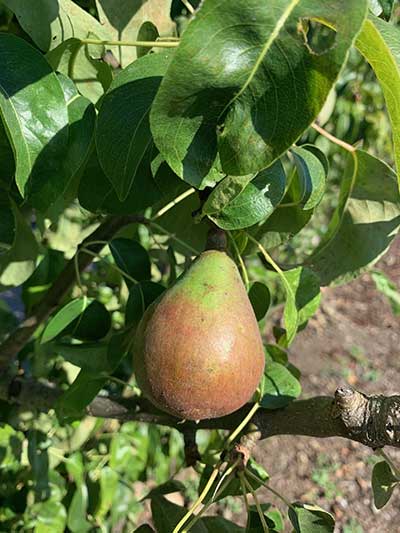Pear Espalier
- Scientific Name: Pyrus communis
- Garden: Edibles and Herbs Garden
- Plant Type: Tree
- Evergreen/Deciduous: Deciduous
- Sun/Shade Exposure: Full Sun
- Moisture Requirements: Moist, Well-Drained
Plant Information
The common pear, native to Europe and northern Iraq, produces the familiar teardrop-shaped fruit seen in stores. Many cultivars are available with varying sizes, shapes, and colors of fruit.
The tree is usually grafted onto dwarf rootstock to maintain a shorter size. It is tolerant of a variety of soil types including clay. Fruit production is best when two or more varieties are planted together.
Problems, Pests and Diseases: Susceptible to fire blight, anthracnose, canker, scab and powdery mildew. Insect visitors include pear psylla, codling moth and borers.
Data Source
https://plants.ces.ncsu.eduPlant Photos







